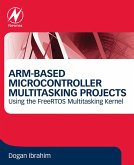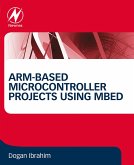Designing Secure IoT devices with the Arm Platform Security Architecture and Cortex-M33 explains how to design and deploy secure IoT devices based on the Cortex-M23/M33 processor. The book is split into three parts. First, it introduces the Cortex-M33 and its architectural design and major processor peripherals. Second, it shows how to design secure software and secure communications to minimize the threat of both hardware and software hacking. And finally, it examines common IoT cloud systems and how to design and deploy a fleet of IoT devices. Example projects are provided for the Keil MDK-ARM and NXP LPCXpresso tool chains.
Since their inception, microcontrollers have been designed as functional devices with a CPU, memory and peripherals that can be programmed to accomplish a huge range of tasks. With the growth of internet connected devices and the Internet of Things (IoT), "plain old microcontrollers¿ are no longer suitable as they lack the features necessary to create both a secure and functional device. The recent development by ARM of the Cortex M23 and M33 architecture is intended for today's IoT world.
Since their inception, microcontrollers have been designed as functional devices with a CPU, memory and peripherals that can be programmed to accomplish a huge range of tasks. With the growth of internet connected devices and the Internet of Things (IoT), "plain old microcontrollers¿ are no longer suitable as they lack the features necessary to create both a secure and functional device. The recent development by ARM of the Cortex M23 and M33 architecture is intended for today's IoT world.
- Shows how to design secure software and secure communications using the ARM Cortex M33-based microcontrollers
- Explains how to write secure code to minimize vulnerabilities using the CERT-C coding standard
- Uses the mbedTLS library to implement modern cryptography
- Introduces the TrustZone security peripheral PSA security model and Trusted Firmware
- Legal requirements and reaching device certification with PSA Certified
Dieser Download kann aus rechtlichen Gründen nur mit Rechnungsadresse in A, B, BG, CY, CZ, D, DK, EW, E, FIN, F, GR, HR, H, IRL, I, LT, L, LR, M, NL, PL, P, R, S, SLO, SK ausgeliefert werden.









